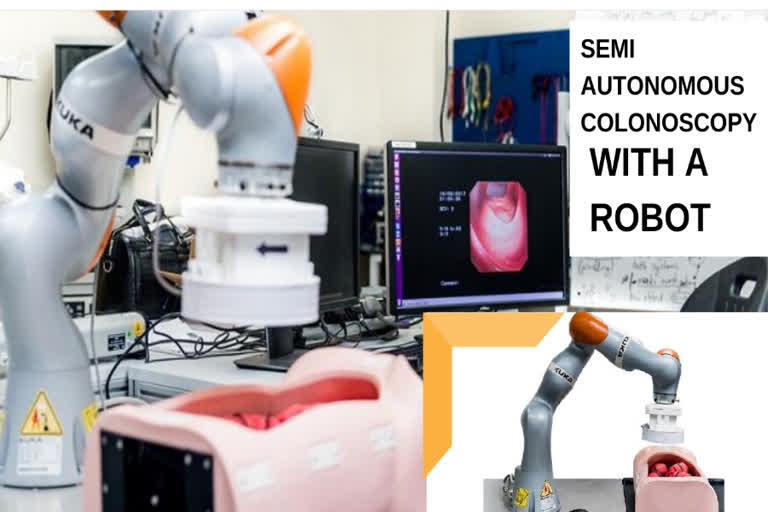Leeds, West Yorkshire, England: The latest findings - 'Enabling the future of colonoscopy with intelligent and autonomous magnetic manipulation' - is the culmination of 12 years of research by an international team of scientists led by the University of Leeds. The research is published in the scientific journal Nature Machine Intelligence.
Patient trials using the system could begin next year or in early 2022.
Pietro Valdastri, Professor of Robotics and Autonomous Systems at Leeds, is supervising the research. He said: "Colonoscopy gives doctors a window into the world hidden deep inside the human body and it provides a vital role in the screening of diseases such as colorectal cancer. But technology has remained relatively unchanged for decades.
- The research team has developed a smaller, capsule-shaped device that is tethered to a narrow cable and is inserted into the anus and then guided into place - not by the doctor or nurse pushing the colonoscope but by a magnet on a robotic arm positioned over the patient.
- The robotic arm moves around the patient as it maneuvers the capsule. The system is based on the principle that magnetic forces attract and repel.
- The magnet on the outside of the patient interacts with tiny magnets in the capsule inside the body, navigating it through the colon. The researchers say it will be less painful than having a conventional colonoscopy.
- Guiding the robotic arm can be done manually but it is a technique that is difficult to master. In response, the researchers have developed different levels of robotic assistance. This latest research evaluated how effective the different levels of robotic assistance were in aiding non-specialist staff to carry out the procedure.
Levels of robotic assistance
- Direct robot control. This is where the operator has direct control of the robot via a joystick. In this case, there is no assistance.
- Intelligent endoscope teleoperation. The operator focuses on where they want the capsule to be located in the colon, leaving the robotic system to calculate the movements of the robotic arm necessary to get the capsule into place.
- Semi-autonomous navigation. The robotic system autonomously navigates the capsule through the colon, using computer vision - although this can be overridden by the operator.
- During a laboratory simulation, 10 non-expert staff were asked to get the capsule to a point within the colon within 20 minutes. They did that five times, using the three different levels of assistance.
- Using direct robot control, the participants had a 58% success rate. That increased to 96% using intelligent endoscope teleoperation - and 100% using semi-autonomous navigation.
- The participants were scored on the NASA Task Load Index, a measure of how taxing a task was, both physically and mentally.
- The NASA Task Load Index revealed that they found it easier to operate the colonoscope with robotic assistance. A sense of frustration was a major factor in operating the conventional colonoscope and where participants had direct control of the robot.
Also Read: Asbestos could be a powerful weapon against climate change



